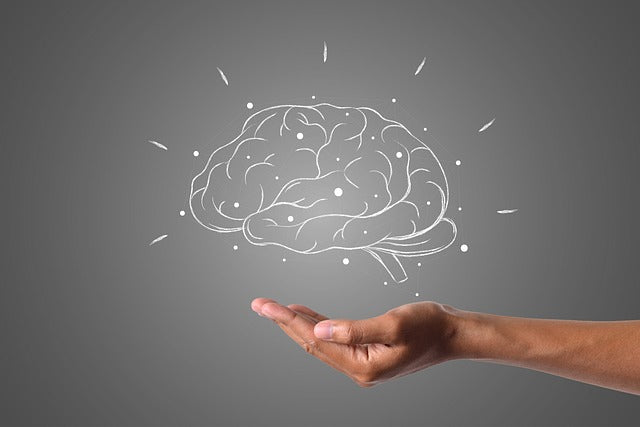The Most Effective Nutrients and Adaptogenic Botanicals to Support Hormone Balance Naturally
Hormones are the hidden elixirs and molecular sorcerers that move our lives. Their secret surges can propel us into passion and love, power us to train for triathlons, and cradle us as we care for our children or pets. Every cell in our body contains specialized receptors that are activated by specific hormones.
Hormones such as estrogen, testosterone, progesterone, insulin, cortisol, adrenaline, all regulate major bodily processes. Metabolism, appetite, heart rate and body temperature are impacted by our many hormones. Hormonal imbalances can lead to many different symptoms, including fatigue[1], acne[2],[3], weight gain[4], moodiness, poor sleep[5], painful or irregular periods, and more.
At certain stages of life, hormone levels can fluctuate wildly. In adolescence, the surging hormones of puberty can hijack emotions. For women, the delicate and intricate choreography of hormones can be hijacked by pregnancy, post-partum exhaustion, or menopause.
Though everyone will experience fluctuations in hormones from time to time, ongoing and subtle imbalances may need to be addressed. Here are some signals of hormone imbalances:
- weight gain or weight loss
- excess belly fat and loss of muscle strength
- poor or interrupted sleep
- dry skin
- chronic fatigue and low vitality
- depression, anxiety and moodiness
- brain fog
- low sex drive
- vaginal dryness
- premenstrual syndrome in women, with sore breasts, bloated belly, and moodiness
- hot flashes, soaking sweats, insomnia, low sex drive and irritability during perimenopause
- hot flashes, low sex drive and difficulty maintaining erections during male andropause
- acne outbreaks
- Food cravings, especially carbohydrate cravings
In order to help rebalance hormones, a multifaceted strategy is key. Dietary change, detoxification, and the wise use of classical adaptogenic herbs can gently bring hormones back into harmony.
Toxic Times, Hormone Mimics, and the Need for Extra Detoxification
We live in toxic times. The delicate machinery of our hormones is easily upset by today’s toxic burden. Over 80,000 chemicals have been registered for use in the United States.[6] These include chemicals in food wrappings and containers, makeup, shampoos, prescription drugs, household supplies, furniture, bedding, clothing, and more. Many of these have never been tested for safety. A significant portion can function as hormone mimics—endocrine disrupters—that overload and saturate our system. Endocrine disrupters have been shown to influence reproduction, fertility, blood sugar regulation, body weight and more.[7] They have been linked to early puberty in girls, early menopause in women, and plummeting sperm counts for men.[8] Many of these molecules persist in the environment.
In order to bring hormones back into balance, it is important to support the body’s ability to detoxify the daily onslaught endocrine-mimics and chemicals.
Glutathione is the body’s master antioxidant and is necessary for cellular detoxification. Glutathione actually binds to toxins, creating larger, inert, water soluble molecules. These water-soluble molecules can then be carried safely out of the cell. Hormonal surges and imbalances have been shown to significantly increase oxidative stress and decrease levels of glutathione.[9]
An important molecule for detoxification of excessive estrogen is known as DIM (Diindolylmethane). DIM is formed in the digestive system from cruciferous vegetables such as broccoli, cauliflower, brussel sprouts, kale, and cabbage. Crucifers have been shown to shift metabolism of hormones, increasing a protective form of estrogen.[10] DIM also triggers detoxifying enzymes that help metabolize estrogen.[11]
Eating a diet rich in fruits and vegetables—at least five to seven servings a day[12]--enhances detoxification. Fruits and vegetables contain antioxidants that activate our own master antioxidant switch, called Nrf2 (nuclear factor E2-related factor). Nrf2 switches on over 200 genes that help our body produce protective and reparative molecules. Numerous antioxidants that work through Nrf2 help combat the potentially harmful effects of excess estrogen.[13],[14]
Exercise has a profound impact on hormones.[15] Regular physical activity has a direct effect on levels of insulin, estrogen, cortisol and testosterone, thyroid hormone, growth hormone, leptin (the ‘satiety’ hormone that helps you feel sated and full after a meal), and more.[16] Exercise helps boost levels of feel-good neurotransmitters (serotonin and dopamine) in the brain. In healthy premenopausal women, exercise is protective: 150 minutes of moderate-to-vigorous aerobic exercise per week for 16 weeks led to significant changes in estrogen metabolism, consistent with a reduction of breast cancer risk.[17] Exercise also helps modulate insulin levels, improving insulin resistance and vascular function.[18] Exercise boosts testosterone.[19] It also helps to regulate appetite and weight.[20]
Most studies and public health organizations recommend 150 minutes of moderate aerobic activity weekly for adults, along with at least two days a week of muscle strengthening activity.[21] Exercise can range from brisk walking to jogging, tennis, dance, cycling, swimming, hiking, tennis, workouts at the gym or home, and many other activities.
Ancient Helpers: Adaptogenic Herbs Are Nature’s Gift for Resilience and Vigor
Hormone imbalance symptoms can be subtle yet profound. The wise use of nonspecific, classic adaptogenic herbs can help support balance in all hormone systems. As a result, many symptoms and systems improve—sleep, mood, weight, energy, libido, appetite, resilience, and vigor.
Adaptogens offer broad-spectrum healing properties. Adaptogenic herbs have been used in both Ayurvedic and Chinese medicine systems for thousands of years. They support normal physiology, and increase non-specific resistance to stress. They can aid in balancing physiology at a cellular level. Adaptogens offer neuroprotective, anti-fatigue, antidepressive, anxiolytic, and stimulating activity. They can also increase mental work capacity and enhance attention.[22]
Adaptogenic herbs are, to quote master herbalist Dan Moriarty, the perfect way to tune your body: “Think of a violin,” says Moriarty. “If tuned too tightly the stress will break the strings. If tuned too loosely, the strings will be floppy. Either way, you won’t have music. Adaptogens tune your body to the right pitch and tension.”
Moriarty has distilled his decades of herbal craft to create three adaptogenic “global resonance” formulas, utilizing classic botanicals regarded as essential healers in cultures around the world. They include a formula for daily, general use; a formula with an emphasis on balancing the female endocrine and reproductive system; and a formula geared to boosting male health, vitality and sexual function. Each formula supports balance in the critical hypothalamus-pituitary-adrenal (HPA) axis, which is our central axis for response to stress. It is a dynamic feedback loop of the endocrine and central nervous system.[23]
Herbs include classic adaptogens used in Ayurveda and Chinese medicine such as high-altitude strains of Maca; both Siberian and American Ginseng; Licorice, Rhodiola, Ashwagandha, and Astragalus roots. Schisandra is considered an “immortality” herb in Asia. For the male endocrine system, Tribulus and Epimedium, two herbs known to enhance vigor and support male hormones such as androgens and testosterone are included.[24],[25] For females, supportive herbs such as Chaste Tree berry and Shatavari as well as Angelica archangelica are included. Chaste tree is known to support menstrual regularity, while Shatavari is a classic Ayurvedic herb used from puberty through to menopause.
Optimal hormone levels lead to more energy, less stress and anxiety, healthy weight, restorative sleep, elevated mood, sharp mental focus, improved workout regimes and a strong libido. Hormonal imbalance does not have to be a way of life. Imbalances and symptoms often respond to proper diet and exercise, as well as support for detoxification systems and the use of carefully selected adaptogenic botanicals.
You might also be interested in:
Signs Your Liver Needs a Detox
Humble but Powerful: Cruciferous Vegetables Detoxify via a Potent Molecule Called DIM
Thrivagen, the Herbal Elixir for Total Woman’s Well Being




